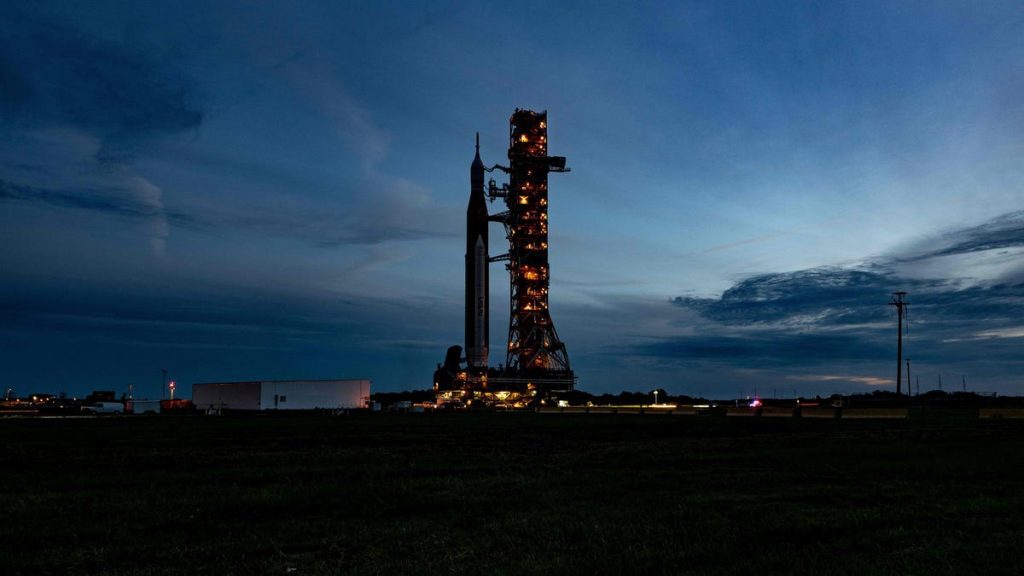NASA Says Artemis 1 Will Launch for Real Next Month

The Artemis I unmanned lunar rocket is rolled back to the Vehicle Assembly Building at Kennedy Space Center in Florida on September 27, 2022, as Florida braces for Hurricane Ian.Photo: Jim WATSON / AFP (Getty Images)
Hurricane Ian seemed to just be the latest disaster to set back the first launch of the Artemis 1 rocket and its unmanned Orion spacecraft, but NASA announced rolling the rocket back into its hanger allowed engineers to give everything a thorough once-over. With minimal work, the rocket should be ready to launch in just one month’s time.
NASA made the announcement that the launch is back on Wednesday, November 14, with backup days scheduled for the following Saturday. Both launch windows are only 2-hours long. NASA made the announcement in a blog post:
NASA is targeting the next launch attempt of the Artemis I mission for Monday, Nov. 14 with liftoff of the Space Launch System (SLS) rocket carrying the Orion spacecraft planned during a 69-minute launch window that opens at 12:07 a.m. EST. Artemis I is an uncrewed flight test to launch SLS and send Orion around the Moon and back to Earth to thoroughly test its system before flights with astronauts.
Inspections and analyses over the previous week have confirmed minimal work is required to prepare the rocket and spacecraft to roll out to Launch Pad 39B at Kennedy Space Center in Florida following the roll-back due to Hurricane Ian. Teams will perform standard maintenance to repair minor damage to the foam and cork on the thermal protection system and recharge or replace batteries on the rocket, several secondary payloads, and the flight termination system. The agency plans to roll the rocket back to the launch pad as early as Friday, Nov. 4.
With the new launch date, the mission will be on the shorter side, with splashdown in the Pacific occurring 25 days later on Friday, December 9.
The Artemis 1 “stack,” or complete rocket, has been fully assembled for over a year now and NASA scientists had serious concerns over how the components were holding up, Ars Technica reports. Then the agency rolled out the largest vehicle on Earth to scoot the massive rocket back into its gigantic hanger to protect it from the Hurricane Ian. That also gave engineers a chance to look it over and now they’re confident Artemis will be able to fly.
G/O Media may get a commission
Up to 49% off
Samsung Early Black Friday
Black Friday came early!
Samsung is running huge deals on home appliances and vacuums. The sale includes some Bespoke appliances, Samsung’s signature smart appliance series. ‘Tis the season for big purchases—and with sales up to 49% off, you’ll be glad you did.
This is NASA’s third attempt to launch the Artemis 1 rocket. NASA scrubbed the launch back in August due to concerns about rapid fuel pressure loss caused by a leak. An early September launch was canceled before the launch window even began due to a hydrogen leak. A late September launch was scrubbed due to Hurricane Ian.
This flight is the first step needed to send Americans back to the Moon. The unmanned flight is supposed to travel 280,000 miles from Earth, complete either a half or one-and-a-half loop around the Moon and splash down in the Pacific Ocean after 24-48 days in space. Ground Control will be testing systems along the entire route.



